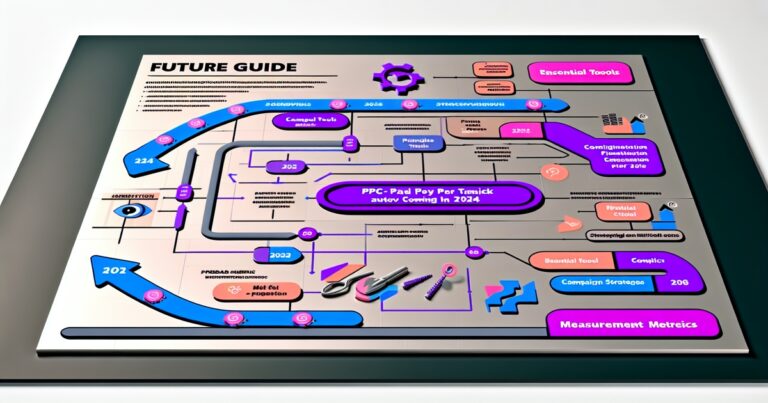The Cost of Neglecting Existing Clients: A Common Problem in Many Businesses
In today’s competitive business environment, companies constantly seek new clients to increase their revenue and expand their customer base. However, many businesses often neglect the importance of retaining existing clients in this pursuit.
Focusing too much on acquiring new clients can result in a costly mistake that can harm the company’s long-term sustainability. While acquiring new clients is essential for business growth, businesses must shift their focus from just winning new customers to keeping the ones they already have satisfied.
The cost of losing a loyal customer is more than just losing one sale; it can lead to losing future deals and negative reviews or word-of-mouth recommendations. In fact, according to research conducted by Frederick Reichheld of Bain & Company, increasing customer retention rates by 5% can boost profits by up to 95%.
Despite this, many businesses prioritize client acquisition over retention because they believe that acquiring new customers is more accessible than retaining existing ones or that the cost of maintaining existing customers is too high. These assumptions are incorrect and may ultimately harm a company’s overall success and growth.
The Importance of Balancing Client Acquisition with Client Retention
While businesses must acquire new clients and expand their market share, it’s equally important not to lose sight of retaining current customers. For small companies, building long-term relationships with clients is vital for creating a stable customer base that can help sustain profitability over time. By simultaneously focusing on acquisition and retention strategies, small businesses can create an effective marketing and sales plan that targets new and existing customers at different stages in the buying cycle.
This approach ensures that a business doesn’t rely solely on one source for sales revenue but maximizes all available opportunities. As such, finding strategies for balancing client acquisition with retention is critical for the success of any business.
To achieve this, companies must understand the importance of their existing customers and implement effective customer retention strategies to keep them satisfied and loyal. The following section will explore why retaining existing clients is essential and how neglecting them can harm a business.
The Importance of Retaining Existing Clients
Why Retaining Existing Clients is Critical for Business Growth
Businesses that focus on acquiring new clients often overlook the importance of retaining their existing clients. By neglecting their current customers, companies miss out on client retention’s many benefits. Keeping existing clients is critical for business growth because it increases revenue and customer loyalty.
The Benefits of Retaining Existing Clients
One significant benefit of retaining existing clients is increased revenue. According to research, it costs five times more to acquire a new customer than it does to keep an existing one.
Therefore, retaining current customers is much more cost-effective in the long run. Additionally, existing customers tend to spend more money than new customers because they trust the business and have already had positive experiences with them.
Another benefit of retaining existing clients is customer loyalty. Loyal customers are likelier to continue doing business with a company and recommend them to others.
Studies show that 82% of consumers seek recommendations from friends and family before purchasing. By retaining their current customers and providing excellent service, businesses create brand advocates who will help promote their products or services.
Statistics and Case Studies Supporting Client Retention
Research supports the benefits of client retention for businesses in various industries. A study by Bain & Company found that increasing customer retention rates by just 5% can increase profits between 25% and 95%. In addition, a report by Adobe showed that returning customers have a higher conversion rate than new visitors.
Case studies also demonstrate the value of client retention strategies. For example, Starbucks created its rewards program, which offers free drinks and other frequent purchase perks to retain its loyal customers while attracting new ones through word-of-mouth recommendations from satisfied customers.
Retaining existing clients is critical for business growth and provides many benefits, including increased revenue and customer loyalty. By prioritizing client retention strategies, businesses can build strong relationships with their current customers and create brand advocates who will help attract new customers through positive recommendations.
The Cost of Acquiring New Clients
Expensive and Time-Consuming
Acquiring new clients can be a costly and time-consuming process for businesses. Companies must spend money on marketing and advertising efforts to attract new customers.
These expenses can quickly increase, particularly for smaller organizations with limited budgets. Additionally, acquiring new clients often requires significant time and resources from sales teams, who must identify potential prospects, create targeted pitches, and close deals with these leads.
Examples of Marketing and Advertising Costs
Marketing and advertising are critical components of any client acquisition strategy. However, these efforts can be expensive.
For example, businesses might spend thousands of dollars on billboards or television ads to reach potential customers. Digital marketing campaigns such as social media ads or Google AdWords also come at a cost since companies must pay per click or impression.
Sales Team Salaries and Other Expenses Associated with Acquiring New Clients
Sales teams play a crucial role in acquiring new clients – they are responsible for identifying potential prospects, building relationships with them, creating pitches that address their specific needs or pain points, negotiating contracts or agreements, and closing deals. However, this process comes at a cost – sales team salaries are typically one of the most significant expenses associated with customer acquisition. In addition to wages, businesses may incur other expenses when acquiring new clients.
For example, they may need to invest in software tools that help streamline the sales process (such as CRM systems), hire additional staff members to support sales teams (such as administrative assistants) or pay for travel expenses if sales reps need to visit potential prospects in person. These costs can add up quickly and pressure businesses’ budgets if they focus too heavily on acquiring new clients without considering the long-term implications.
The Allure of New Clients: Why Businesses Focus on Acquisition Instead of Retention
Meeting Sales Targets: The Pressure to Keep Growing
For many businesses, the pressure to meet sales targets can be overwhelming. There is often a belief that acquiring new clients is the only way to continue growing revenue and staying ahead of the competition.
As a result, businesses may put all their efforts into acquisition-focused marketing campaigns and sales pitches, neglecting their existing client base. However, this approach is often short-sighted.
While acquiring new clients can boost revenue in the short term, it does not provide the same long-term benefits as retaining existing clients. By focusing solely on the acquisition, businesses risk neglecting their loyal customers, who are more likely to generate repeat business and referrals.
The Perception that New Clients are More Valuable than Existing Ones
Another reason why businesses may prioritize acquiring new clients over retaining existing ones is a belief that new clients are more valuable. It’s easy to see why this perception exists – new clients bring in fresh revenue streams and expand a business’s customer base. However, this focus on acquisition ignores the value of loyal customers who have already established trust in a brand and are more likely to make additional purchases or refer friends and family.
Furthermore, retaining existing clients costs much less than acquiring new ones. A study by Frederick Reichheld found that increasing customer retention rates by just 5% can lead to an increase in profits of between 25% and 95%.
The Draw of Novelty: The Attraction of New Things
There may be a psychological component when prioritizing client acquisition over retention – humans are naturally drawn to novelty. Something is exciting about capturing the interest of someone who has never heard of your business.
However, while businesses need to attract new clients, nurturing relationships with existing ones is equally important. By neglecting existing clients in favour of the acquisition, companies risk losing the trust and loyalty of their most valuable customers.
While the allure of new clients can be tempting for businesses, prioritizing retention is essential to achieve long-term success. By understanding why companies prioritize acquisition over retention, we can focus on a more balanced approach that values new and existing customers.
Strategies for Retaining Existing Clients
Providing Excellent Customer Service
One of the most effective ways to retain existing clients is by providing excellent customer service. Customers who feel valued and appreciated are likelier to remain loyal to a business, even if they can find similar products or services elsewhere.
Therefore, businesses should strive to create a positive customer experience at every touchpoint, from initial interactions with sales representatives to post-purchase support. This may involve training employees on handling different types of customer inquiries and complaints and investing in technologies that can improve the overall customer experience.
For example, businesses can leverage customer relationship management (CRM) software to track customer interactions and preferences over time. This will enable them to tailor their offerings and communication strategies to customers’ needs and interests.
Offering Loyalty Programs or Discounts
Another way businesses can retain existing clients is by offering loyalty programs or discounts that incentivize repeat purchases. These programs can take many forms, such as points systems accumulating over time or VIP programs offering exclusive perks for frequent customers.
The key is to make these programs valuable enough that customers feel motivated to participate while ensuring that they align with the overall brand image and business objectives. For instance, a luxury fashion brand might offer exclusive access to fashion shows or personalized styling sessions as part of its loyalty program. In contrast, a grocery store might provide discounted prices on frequently purchased items.
Regularly Communicating with Customers
Regular communication with existing customers is essential for retaining their loyalty over time. This involves engaging with them through multiple channels, such as email newsletters, social media updates or personalized follow-up calls after purchases.
Businesses should aim for a balance between promotional messages and genuinely helpful information, such as industry insights or updates on product development. Additionally, they can use customer feedback and insights from data analytics to understand better how to communicate with each customer, including the best timing and frequency of communication.
Striking a Balance for Long-Term Success
Both client acquisition and retention are essential strategies for any business looking to succeed in the long term. While acquiring new clients can help companies to expand their reach and increase revenue, retaining existing clients can increase loyalty, repeat business, and positive word-of-mouth referrals. However, companies often focus too heavily on acquiring new clients at the expense of maintaining existing ones.
This can result in higher costs, lower customer satisfaction, and missed opportunities for growth. On the other hand, an overemphasis on retaining existing clients may cause businesses to miss out on potential new customers or fail to capitalize on emerging markets.
The Importance of Prioritizing Both Strategies
The key takeaway from this article is that a balanced approach is necessary for long-term success. Businesses should strive to balance their efforts between client acquisition and retention by allocating appropriate resources toward both strategies. This involves investing in marketing campaigns to attract new customers while providing excellent customer service and personalized support to keep existing customers happy.
As businesses grow and evolve, it’s essential to regularly reassess these strategies to ensure they are aligned with current market trends and customer preferences. By balancing client acquisition and retention, businesses can achieve sustainable growth that benefits their bottom line and customer base.
An Optimistic Outlook
While balancing client acquisition with retention may seem daunting initially, it’s important to remember that both strategies are achievable with the right mindset and resources. By prioritizing these efforts equally, businesses can succeed in a competitive market while building solid customer relationships. Ultimately, by focusing on client acquisition and retention as complementary strategies rather than competing ones, businesses can create a sustainable path toward growth that benefits everyone involved, from customers to management and shareholders.
Conclusion
By retaining existing customers, businesses can build a loyal customer base that generates consistent revenue and contributes to long-term growth. Strategies such as providing excellent customer service, offering loyalty programs or discounts, and regularly communicating with customers are essential for achieving this goal.
However, businesses must also balance these efforts with a focus on acquiring new clients, as both strategies are necessary for maintaining a healthy business. By balancing client acquisition and retention strategies, companies can create sustainable growth over time while creating a positive customer experience at every touchpoint.









